 I’ve looked at the island from the first day we arrived here, set like a dark stone in a band of glittering blue water. It seems to float within reasonable reach, catching the eye with ease when you walk along the shore, but it’s remained steadfastly remote all that time. The island of Golem Grad is anchored to another country, over the invisible line in the lake that forms the border with the former Yugoslav Republic of Macedonia, and the consequent difficulty in getting to it has lent it a magnetic and dreamlike cast.
I’ve looked at the island from the first day we arrived here, set like a dark stone in a band of glittering blue water. It seems to float within reasonable reach, catching the eye with ease when you walk along the shore, but it’s remained steadfastly remote all that time. The island of Golem Grad is anchored to another country, over the invisible line in the lake that forms the border with the former Yugoslav Republic of Macedonia, and the consequent difficulty in getting to it has lent it a magnetic and dreamlike cast.
Islands can alter us; unmoor us from the mainland of our minds. A span of shimmering spring water separates me from the bold, uninhabited rock, and as we stream away from shore I start to feel that the crossing is where any island begins. The water skimming past is a prelude, like a door swinging wide onto an unseen room. The air riffles through my hair; cool on my skin. A few pelicans glide away from us, sheering the lake into rivulets of silver. The island nears, looms large over the water, distinct in its mood to the rest of the basin.
Stepping ashore, I see a venomous horned viper slither between rocks, its zigzagged tail disappearing like the last of a rope being hauled up into a boat. It’s the first sign, in a place known as the island of snakes, that we’ve entered a different order of experience. White blossom loosens its perfume into the air, so that it hovers over the island like the dust of winter rugs shaken out in a spring clean. The scent is so dense that it seems the very air is forged from the fragrance, sweet and impossible to ignore, like the pressing attentions of a youthful affair. Alpine swifts swirl and scream overhead, circling always above us, as if each bird were a balloon that had been tethered to the island. Nightingale song swells from deep in the trees, an excited flight of sound, a musical scale to be climbed into air. The island quivers with a ceaseless, creaturely murmur; it’s the sound of an arriving season, and all the pulse and hum of wild profusion.
There is a dazzling warmth about us, the island being the beneficiary of a micro-climate peculiar to its shores. Such heat and humidity leads to a startlingly lush surface: the ancient junipers clad in an extravagant wardrobe of lichens and mosses; the forest floor an emerald weave. Euphorbia spokes from the coast like a protective green moat and birds nest across the island in the dense shroud of trees. Golem Grad is small, though, measuring merely two square kilometres in total. Yet it supports an astonishing wealth of wildlife for such a miniature realm; its tally of certain species unfathomable at first glance: 1,700 Hermann’s tortoises; 1,200 pairs of nesting cormorants; 120 horned vipers; and more than 10,000 dice snakes. Wherever you walk you are in the presence of a snake, somewhere close by, a slithering or sunning shape that’s laid claim to the island.
The wild has made this island its world, but like most places in the region it’s also traced by an antique human history, recording more than two millennia of tenure. Centuries worth of ruins break the surface of a sea of moss. Relict churches and monasteries cling on in the absence of parishioners, and the walls of a Roman villa and cistern dating from the 5th century hold fast to this solitary citadel of stone. The rocky white coast is festooned by a blaze of purple and yellow blooms, where a cross was chiselled above the water line long ago. All the sunlight of a wakening spring bathes the water and stones, until the refracted, glimmering light touches even the shade.
Sea-dazzle sparkles off the spray of the boat. The air is thick with the dark forms of cormorants launching from the canopy of the trees as the boatman picks up speed. We slide through the still and graceful lake, moving out of the sway of the island, and I wonder how it would have felt to have lived there over the centuries, like the Roman owners of the villa or the monks kneeling at prayer, peering out at the mainland as though that were an island. As if the place apart was over there, the strange, unvisited shore in the distance. As the boat crosses the blue beneath a tracery of whirling birds, I sense that each of us harbours an island inside, whether real or in the mind, and we leave this one behind with the brimming light, to its saints and swifts and snakes.
With many thanks to Oliver Avramoski and Dejan Dimidjijevski from the Galicica National Park, of which Golem Grad is a part, for their gracious hospitality in showing us around, and their willingness to share their intimate knowledge of this remarkable island.
Discover more from Julian Hoffman
Subscribe to get the latest posts sent to your email.

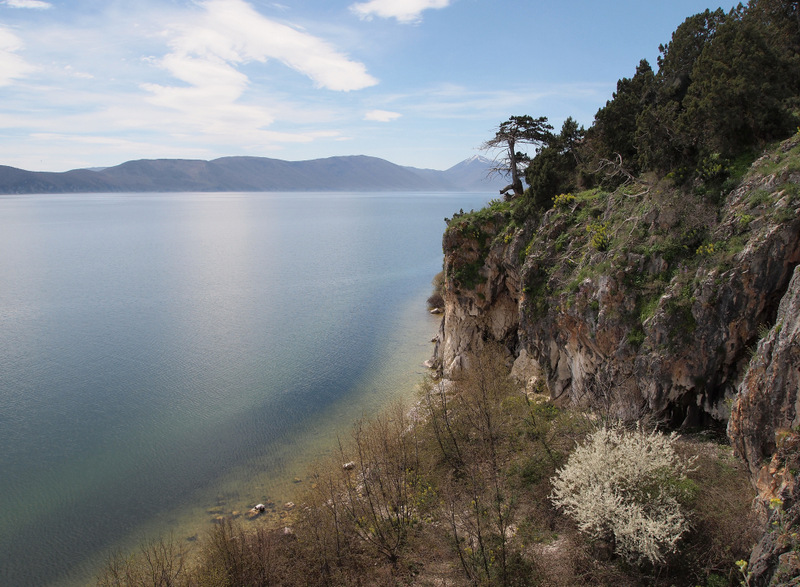
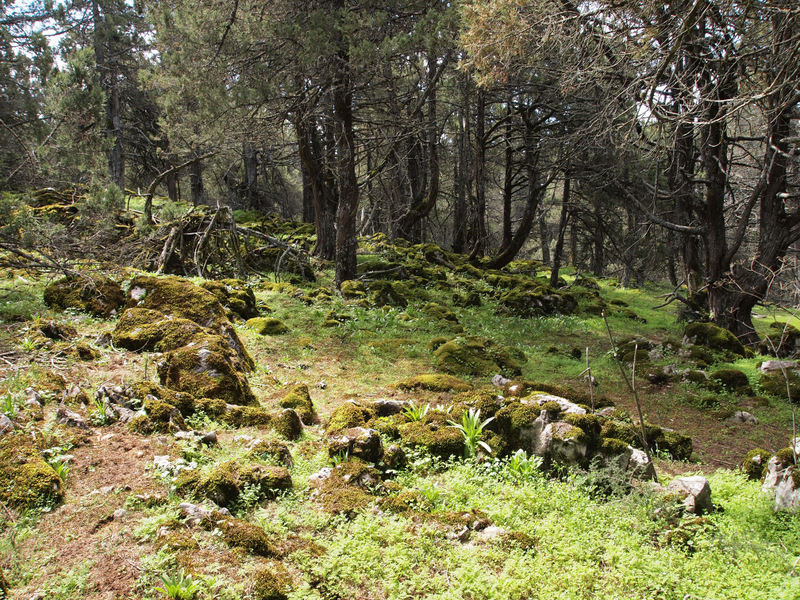
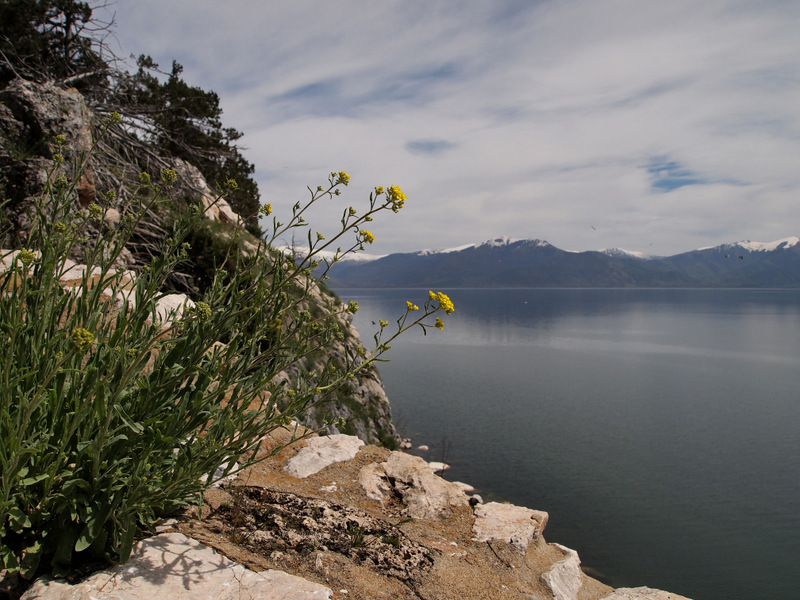

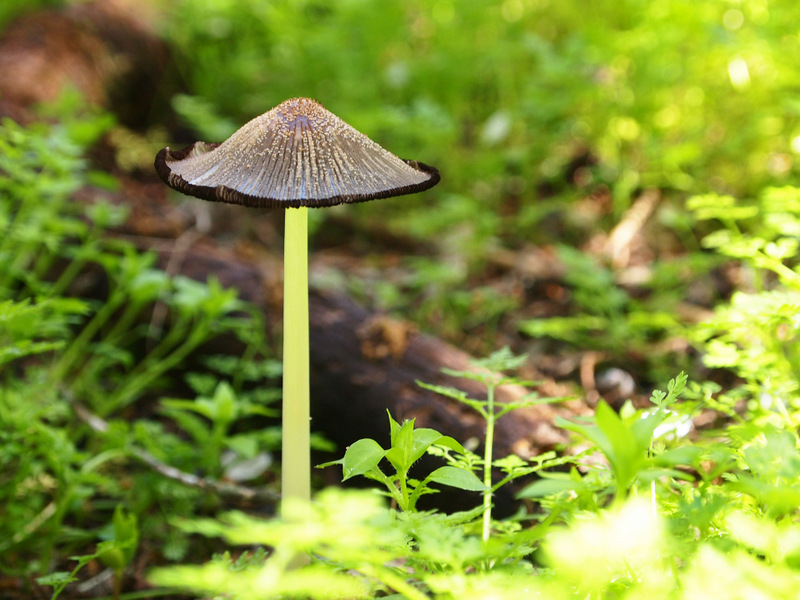


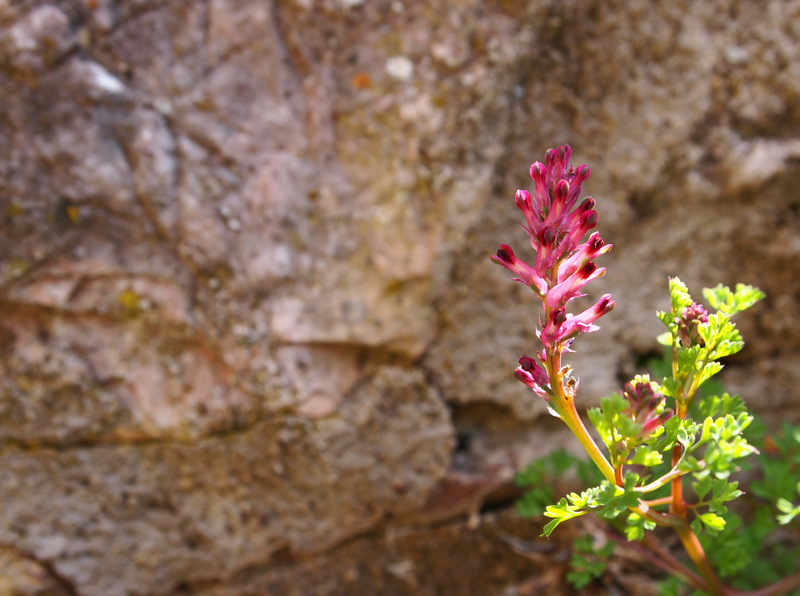
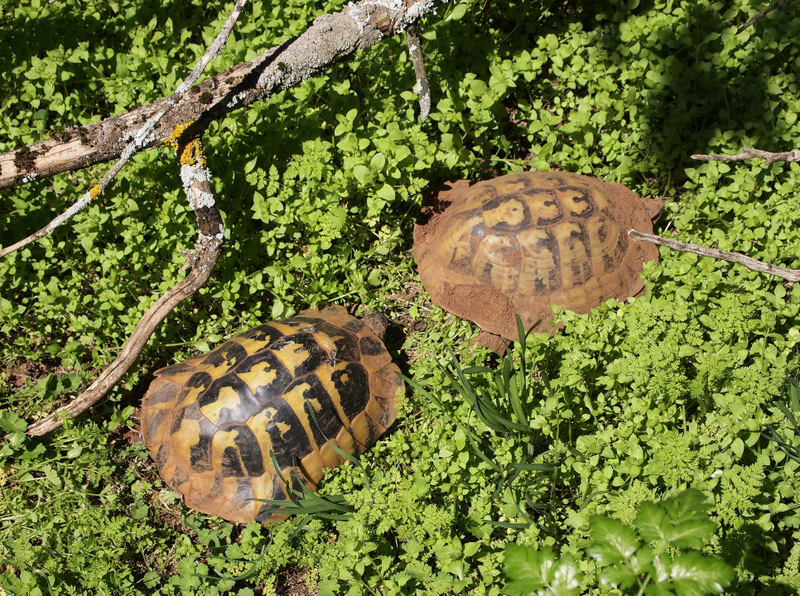
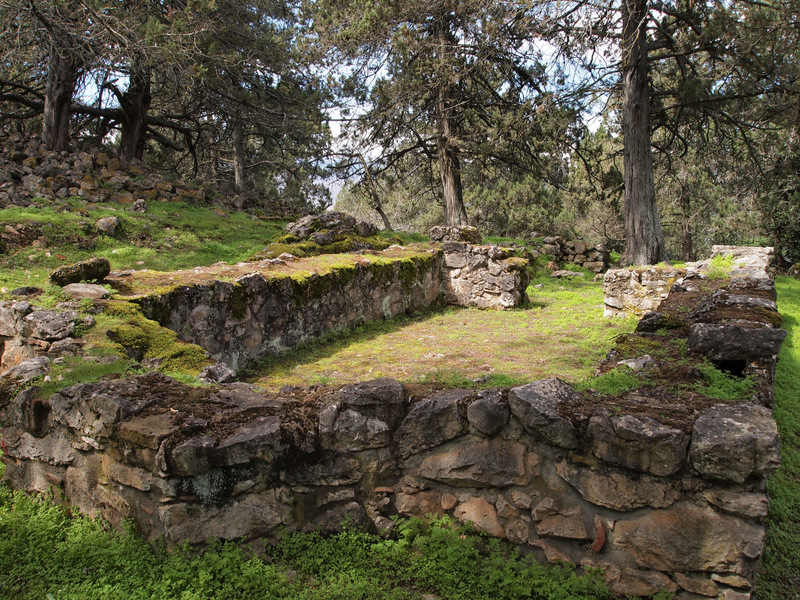

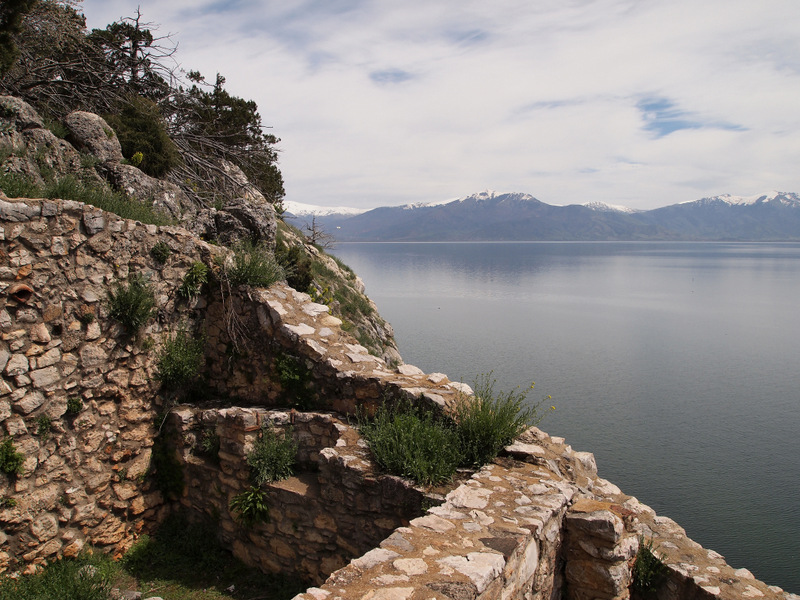

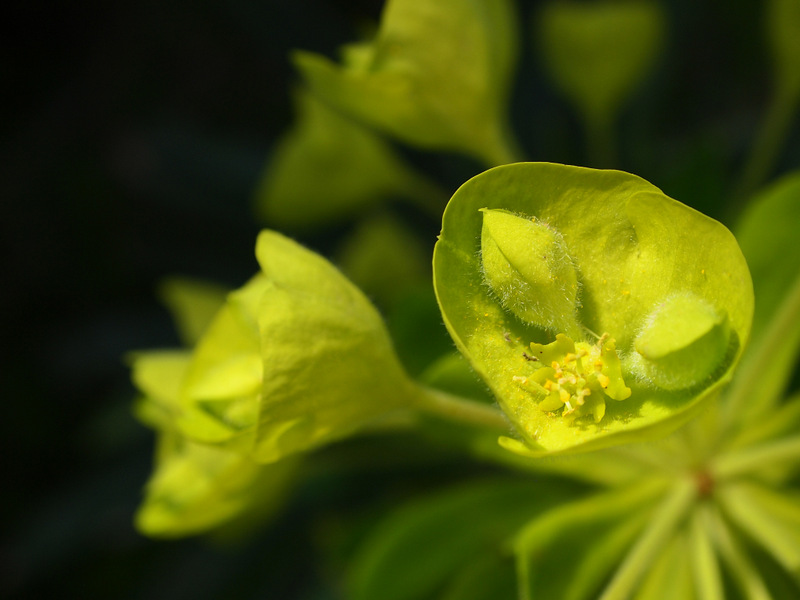


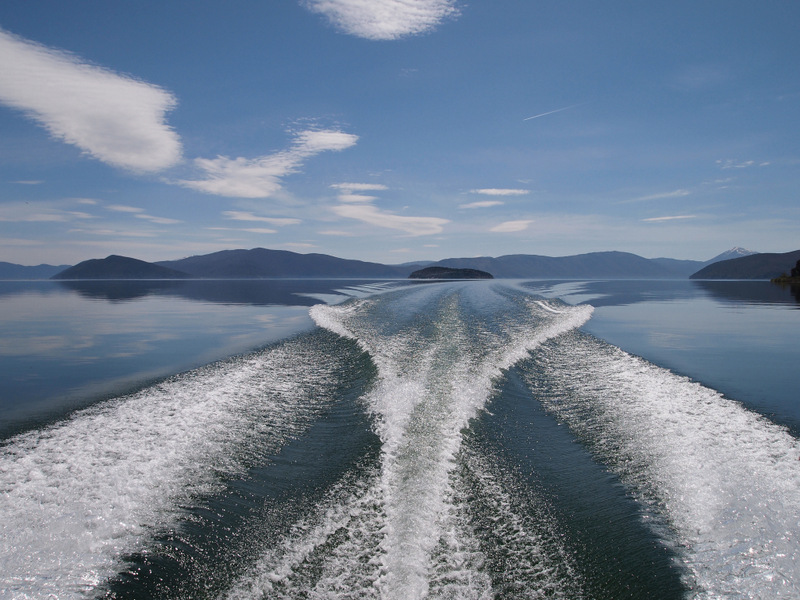






Absolutely stunning & overflowing with life !
Many thanks for the kind words…delighted you enjoyed it!
I assume you wear some sort of boot to prevent against snake bites ? I wonder who counted ’em ?
What a wonderful place to explore.
In my ignorance I was amazed to see the snowy mountains of Greece in the distance. Just not used to thinking of Greece and snow in the same location.
OK. Should have gone to Google Earth. I think those snowy mountains are in Albania ? Amazed to see one lake crossing three national borders.
Just normal walking boots, to be honest, Sybil. A team of biologists visits every summer, and most of the snakes have been recorded by hand by them, which is pretty remarkable in itself. Some of the mountains in the photos are in Albania, others in FYR of Macedonia and a couple in Greece. There’s still plenty of snow in the high Greek mountains here; and Mount Olympus will have snow long after ours is gone! Many thanks for reading, and hope all is well!
What a fabulous place, never heard of it before, thanks for taking me there, and great writing too :)
Delighted you enjoyed it, Mike! It’s quite a remarkable place, and I feel fortunate to have been able to visit. Many thanks for the kind words.
Great piece Julian. Love your line: “Islands can alter us; unmoor us from the mainland of our minds” There is something distinctly magical about traversing the geographical and psychological distance that separates an island from the mainland.
Many thanks for the kind words, fifepsy. Like you, I’m continually fascinated by how we seem to change when we approach islands. Rich scope for further investigations!
Wow! Thanks for such a great “trip”!
Thanks, Savvy Sister! So pleased you enjoyed it.
Thank you for this gem! I would have never expected such a bio-diversity on a small island like this, mostly unbeknown to the rest of the world, which is most likely the reason why it is still so ‘untouched’ – a true treasure.
Thanks, Verena! Likewise, I had no idea how rich the biodiversity of the island would be, even though I’d read about the place a number of times over the years. But that didn’t prepare me for just how significant it is, which came as a complete surprise that day. Delighted you enjoyed this little journey across the lake, and hope all is well with you – thanks for reading!
Just gorgeous. It seems terribly exotic from over here in the damp grey Pennines. Love the photographs Julian, thanks for taking us there.
But as I think back to those wonderful grey Peninnes in my memory, I hear them calling me from afar! Thanks for the kind words, Selina, and for taking the time to read. Hope all is well with you and your writing, and that spring is drying the damp!.
What a magical journey. The ruins whisper of so many untold stories of those who the island
called to her shore. I would like to rest my ear against the stones and listen.
Thanks, Janet; I’m so pleased you were able to journey through the words and images to the island. Like you, I often find myself wanting to “rest my ear against the stones and listen.” Hope all is well, and many thanks for adding your thoughts.
“Islands can alter us; unmoor us from the mainland of our minds.” — I love that line. It’s so true. And also that the crossing is a part of the island, I think that process of getting a boat over re-enforces the islandness of a place. Lovely post and beautiful pictures!
Thanks for your generous words, Naomi. Such a delight to hear that you enjoyed the post and I love your phrase, “the islandness of a place.” Many thanks for reading and taking the time to add your thoughts. Best wishes from here!
‘a ceaseless, creaturely murmur’ – what a perfect description for this distant, marvel of a place. I also love the ruins, as elegant and lovely as any aristocratic towers.
The ruins add so much to the island, lending a measure of human time to this remote place at the rim of three countries. Thanks ever so much for the kind comment, Aubrey.
Your figurative turns of phrase always do me in. “The sound of an arriving season…” Lovely!
Thanks, Emily! Such a pleasure to hear from you and delighted you enjoyed the piece. Hope all is well!
I was also taken with your, “islands can alter us; unmoor us from the mainland of our minds”, as it nicely describes the voyage I often take upon reading one of your reflections. As such, your blog could probably be considered an archipelago with some islands very close to each other and others more distant in meaning.
Many years back a friend and I considered renting a house on an incredibly tiny island near Vancouver. What struck me as we took the minute or two rowboat ride from the mainland to the island was the immediate and visceral feeling of leaving worries and woes behind us as we made the crossing. If we had chosen to rent I am sure that the island would not have remained worry-free, but there is something to be said for such a symbolic separation.
Thank you for the very generous compliment, Paul. I’m honoured to hear that this blog touches you in such a way. And your story is a wonderful encapsulation of islands and their enduring appeal. The fact that within a minute or two of a rowboat crossing worries and woes can be left behind, says much about the nature of our concerns, and how islands can somehow loosen their hold. Your notion of a “symbolic separation” is apt; is the practice of meditation essentially a way of cultivating islands in the mind, a place of letting go?
Beautiful piece Julian – transported me totally. I think islands bring out the child in me, the Swallows and Amazons instinct, and the possibility of exploring within confines, which is somehow more manageable. Reminded me most of the Ile de Port Cros off the south of France.
Thanks kindly, Diana. It’s a really interesting point that you’ve added – that islands bring out the child in you. I’m immediately reminded of reading The Summer Book by Tove Jansson a couple of years ago, and thinking how the island so beautifully harbours so much of my remembered childhood – the intimacy and light, the “exploring within confines” as you put it. I’ve never been to Ile de Prt Cros but am very intrigued – about to track down some photos of it online!
I read the Summer Book too a few years back. I think it is the water’s edge feel that is what counts even if not an actual island. Port Cros had a particular character of solitude and exploration from having no traffic, Mediterranean vegetation and wildlife, ruins, but probably not that similar in reality. Walking with fish was a wonderful experience!
A marvellous piece, julian – full of sunshine and slithering life.
Many thanks, Laurence. I’m don’t know how far south you’ve travelled in your journeys around the former Yugoslavia, but I’m sure you’ll have discovered a number of gems in this fascinating part of the world.
Brilliant!
Thanks you – delighted you enjoyed it!
Love the exquisite little mushroom – so many stories of history and nature to be discovered in such a small and enchanting place. The stone wall (foundation?) is captivating. Thanks so much for sharing these wonderful pictures!
Many thanks, Barbara! It continually fascinates me how many stories these small places contain, preserving them in stone and silence and song. Thanks for taking the time to read, as always.
So wonderful to return to your blog and be taken on a wonderful journey that does, indeed, ‘unmoor’ me ‘from the mainland of [my] mind’ (so love that phrase). An absolutely beautiful exploration of this fascinating and magical place, Julian. In your writing, I feel that particular, time-compressed, concentrated sense of absorbed noticing that islands inspire. In your words, you enclose that feeling of being adrift – just as islands do themselves. The faraway and the contained combined. Stunning, as ever.
Is beautiful! Congratulations to see such beauty!
Reblogged this on theoverviewerph.
Reblogged this on sueshan123.
Excellent blog here! Also your web site loads up very
fast! What web host are you using? Can I get your affiliate link to your host?
I wish my website loaded up as quickly as yours lol
Excellent thanks, great blog post and lots of detail – I’m travelling to the former Yugoslav Republic of Macedonia at the end of this Month and spending about a week in Ohrid which is pretty close. I have a car at my disposal and just wondered where you managed to organise a boat from (did you sail yourself or have someone take you?) – I’m hoping to visit myself – I saw an Island on the Map and had to investigate :)
Dear Stuart,
Many thanks for your kind words. I’m delighted you enjoyed the post and completely understand that allure to investigate an island that you mention! Regarding visiting, Golem Grad is in the core of the Galicica National Park and can’t be visited without permission due to its sensitive environment. I was only able to visit after being invited by the Park and was under a very strict and short time limit. Having said that, if you’re in Ohrid for a week, the Park itself is accessible and open to the public in nearly every other location and is truly stunning. It will be at its absolute best right now for wildflowers and returning migrant birds. I’m sure that wherever you go in the area you’ll have a great experience. And Ohrid itself is fascinating. Hope you enjoy!
Best wishes,
Julian